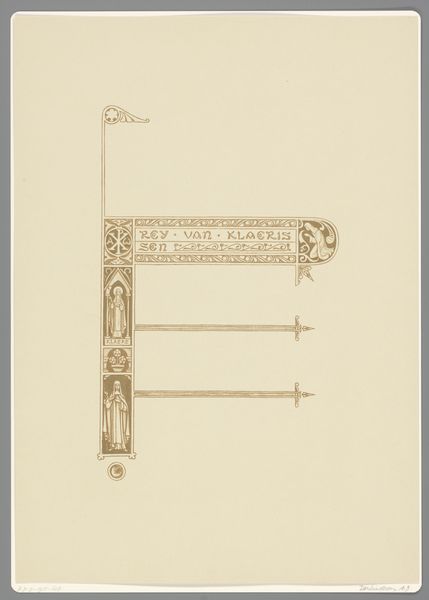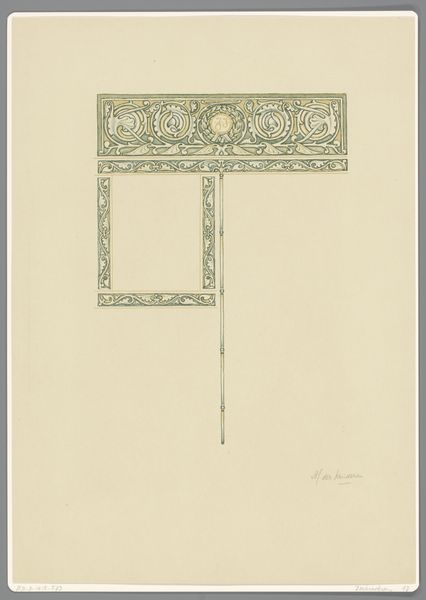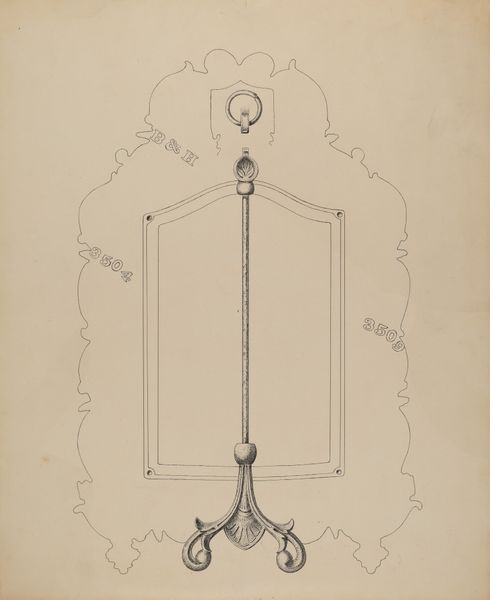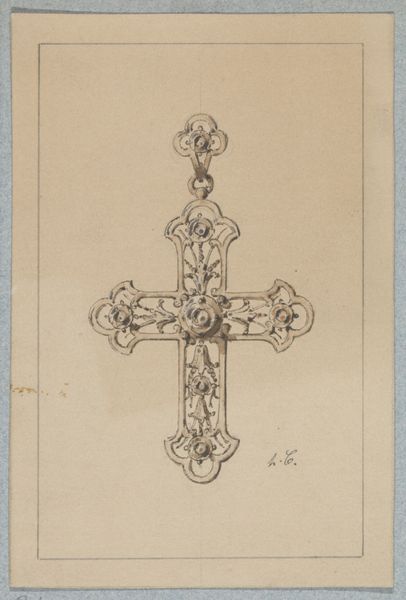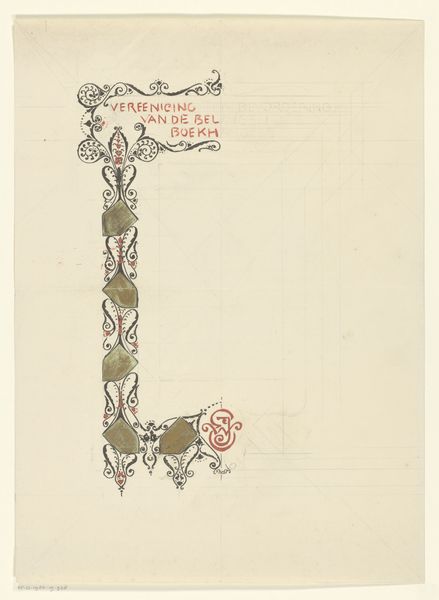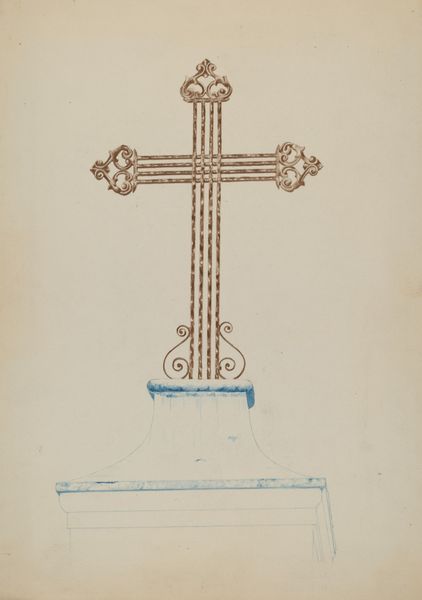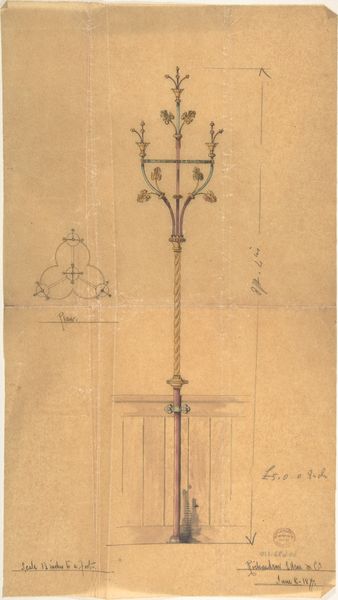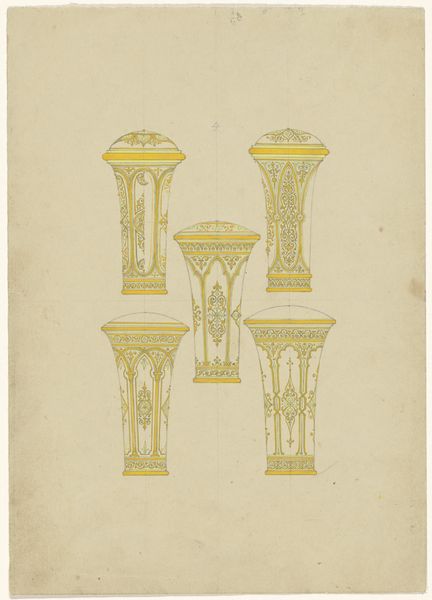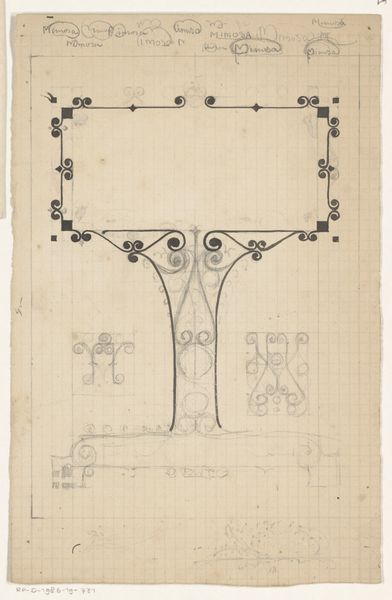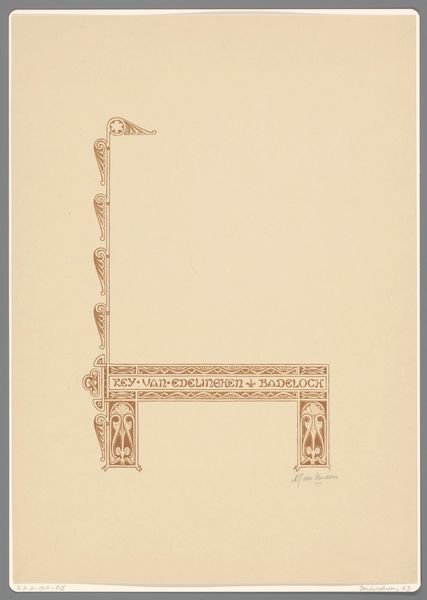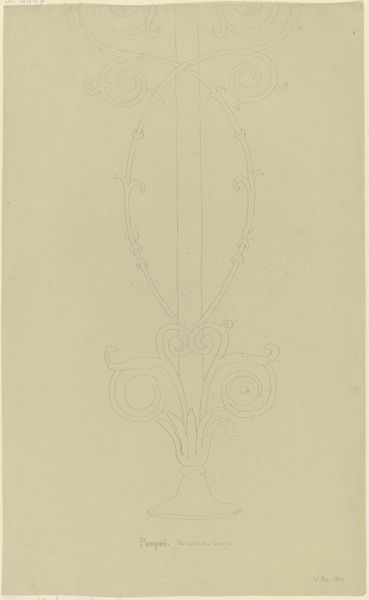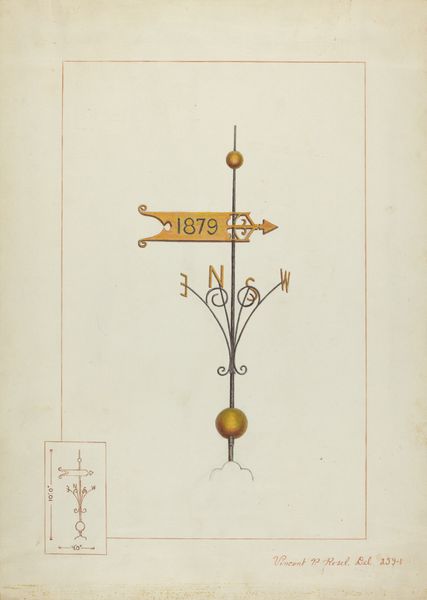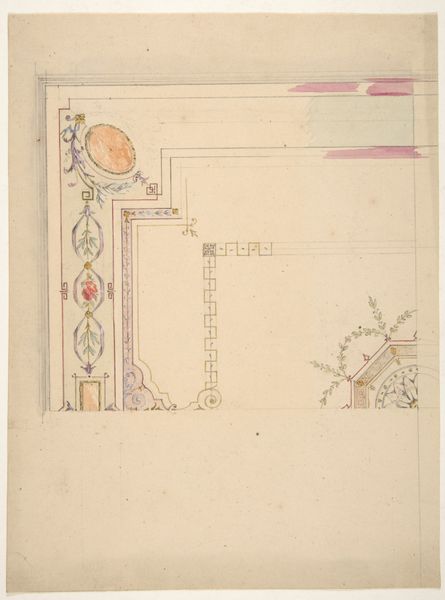
drawing, paper, ink, pencil
#
drawing
#
art-nouveau
#
medieval
#
figuration
#
paper
#
ink
#
pencil
#
line
Dimensions: height 414 mm, width 295 mm
Copyright: Rijks Museum: Open Domain
Curator: Let’s focus on this ink and pencil drawing by Antoon Derkinderen, made sometime between 1894 and 1901. It’s titled "De heer Van Vooren met den trompetter, Gysbreght van Aemstel." Quite a mouthful. Editor: Immediately, I get a strong medieval manuscript vibe from this. It's the kind of drawing that makes you want to curl up in a dusty library, surrounded by old books. Curator: Absolutely. The artist uses line work to suggest a flattened, almost tapestry-like surface. Look closely at how he combines art nouveau aesthetics with that deliberate nod to medieval art and design. It draws clear inspiration from illuminated manuscripts. Editor: It’s fascinating how he evokes the past with a relatively minimal palette, mostly using these subdued browns. I almost feel like I can smell the parchment! And the figures, are they biblical, historical? They carry such solemn weight. Curator: They likely depict figures from the play "Gysbreght van Aemstel," a work rooted in Amsterdam's history, blending the secular with the sacred, the individual and the collective, which also accounts for his integration of art nouveau. Also, notice the use of line and negative space--they're just as crucial to the design as the ink itself. The whole work feels meticulously crafted. Editor: Yes, crafted, that's the perfect word. It makes me consider how the labor of producing these detailed drawings must have resonated then. Did audiences then feel the resonance with historical styles? Did it signal national or political affiliations perhaps? It is not simply beautiful. It speaks. Curator: Good point. I think by reviving this old style of production, and with a historic narrative, Derkinderen makes a comment on the relationship between Dutch identity, artistry, and societal evolution. A work very much attuned to the tastes and needs of its time. Editor: Well, it's been such a fascinating exercise delving into the cultural and societal context of this very singular work. It's an artifact that continues to speak volumes to us today!
Comments
No comments
Be the first to comment and join the conversation on the ultimate creative platform.
